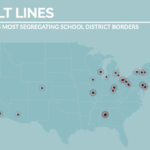Commentary: Given the fact that two-thirds of the world’s 1 billion Catholics live in developing nations, the next pope should be from Latin America or AfricaBy Earl Ofari Hutchinson, Pacific News Service
LOS ANGELES- Apr 04, 2005-While he mourned the passing of Pope John Paul II, South African Anglican Archbishop Desmond Tutu also clamored for an African or Latin American to be the next Pope. There are compelling, and for Tutu, troubling reasons why the Archbishop made that public demand. Recently, hundreds of worshippers gathered in the hills above Mexico City for a day of prayer, baptism, spiritual renewal and soul cleansing. They were not Catholic. They were evangelical Christians, part of a growing population that is challenging the age-old supremacy of Mexican Catholicism. The situation is similar in Nigeria, Brazil, the Philippines, and dozens of other countries in Asia, Latin America and Africa. Two-thirds of the world’s 1 billion Catholics live in developing nations. There are nearly 100 million Catholics in Africa, and an estimated 200 million black Catholics worldwide. The number of Catholics in the non-white world has soared in the past decade. The growing acceptance or rejection of Catholicism by millions in Asia, Africa, and Latin America, and among African-Americans presents a towering dilemma for the 117 cardinals, who will begin their hush-hush conclave in two to three weeks to elect a papal successor. The dilemma: Should the next pope be non-European, and reformist? The Catholic Church, over the last few decades, has been wracked by ideological, theological and philosophical battles over the issues of abortion, gay marriage, women in the priesthood and celibacy. It has seen a huge free-fall in the number of priests and nuns, has shelled out millions to settle priest-child sex scandals, and will spend even millions more on future settlements. As grave as these problems are, they pale in relation to the titanic struggles that confront the Catholic hierarchy in trying to adapt and adjust to the profound cultural and racial shifts in the makeup of its global flock. John Paul II recognized that the single biggest challenge facing the church was to the potential millions of Catholics who could be lost to Islam and the evangelicals, and other faiths in non-white countries. The church can no longer stand pat on entrenched dogma and past practices. It will have to change those practices, its approach to non-white Catholics, and eventually the ethnic face of the man at the top. The names of well-connected and respected African and Latin American cardinals have been frequently bandied about as having the right stuff to head the church. That doesn’t mean that Catholic Church leaders will take the bold step of naming one of them to the top spot. There has never been a Latin American pope, and the last African pope was 15 centuries back. But the top non-European contenders bring the unique assets that the church desperately needs to staunch fierce competition from other religious faiths in developing nations. These men can bridge the Muslim and Christian divide, make battling poverty, the inter-ethnic and religious violence, and the damaging economic side effects of rampaging globalization big priorities, and place strong emphasis on social and economic reforms in poor countries. They have written and spoken extensively on these problems that can make or break the church in the next decade in Asia, Africa and Latin America. A leading contender for the top job, Nigerian born Cardinal Francis Azinde, in a speech at Wake Forest University a few years ago, acknowledged that the church can’t duck these issues. “There is no Catholic hurricane or Baptist drought,” he said. “There is no Jewish inflation or Muslim unemployment. There is no Buddhist drug addiction or Hindu AIDS. These problems don’t respect religious frontiers.” The political jockeying to fill the papal vestments of John Paul II will be fierce. It took two days and eight ballots to put John Paul in the papal chair in 1978. The European cardinals hold the dominant papal cards in the balloting, with 58 papal electors. Latin America has 21 papal electors, and Africa has 11. Italy has the most papal votes of any single country, and for five centuries before John Paul’s near 30-year reign, the pope was Italian. If they so choose, they can bring mountainous pressure to put an Italian back in the papal top spot. A black or Latin American pope, though, would send the strong message to practicing Catholics and prospective converts in Latin America or Africa that the Catholic Church is committed to making them not only church members, but policy decision makers of the Catholic Church. The prospect of the next pope being from Africa or Latin America excites millions of non-white, non-European Catholics. There’s no guarantee that that will happen, and, given the dominance and conservatism of the Italian and European cardinals in the papal voting, a great likelihood that it won’t. Even if it doesn’t happen this time around, the problem of making the Catholic Church even more diverse, inclusive and relevant to Africans and Latin Americans will still be there, no matter who assumes the top papal spot.
PNS contributor Earl Ofari Hutchinson, a political analyst and social issues commentator, is the author of “The Crisis in Black and Black” (Middle Passage Press). |
||
|










